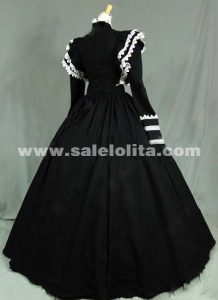The epoch known as the Renaissance, spanning from the 14th to the 17th century, was a period of profound cultural and artistic rebirth in Europe. This era witnessed a distinctive evolution in many aspects, notably in the realm of clothing. Renaissance clothing is celebrated for its intricate design, opulent fabrics, and the reflection of the period's quest for knowledge and beauty in every stitch.
This was an era where fashion became a symbol of one's social status and individual wealth. The affluent displayed their prosperity through garments made of luxurious materials such as silk, brocade, and velvet, often imported from distant lands at great expense. Men's and women's attire featured elaborate embroidery and ornate trims, with the latter showcasing voluminous skirts and corseted bodices that emphasized a slender waist.
The style and cut of Renaissance clothing varied considerably across Europe, influenced by regional customs, climate, and the dictates of fashion that flowed from the courts of Italy and France to the rest of the continent. For men, doublets, hose, and cloaks were the norm, while women wore full skirts, tight bodices, and a variety of headgear that ranged from simple coifs to extravagant headdresses.

Renaissance clothing did not merely serve an aesthetic purpose but also conveyed messages about the wearer's place in the social hierarchy, their profession, and even their moral standing. Sumptuary laws were often in place to regulate the extravagance of dress and ensure that certain fabrics and adornments were reserved for the upper echelons of society.
The fascination with Renaissance attire continues in modern times, with historical dresses being a rich source of inspiration for designers, costume makers, and enthusiasts of historical reenactment. The elegance and complexity of Renaissance clothing are still admired, and its influence can be seen in contemporary fashion, where the drama and opulence of the past are often reimagined in new collections.
Understanding Renaissance clothing is to recognize the era's influence on modern fashion sensibilities. The Renaissance's contributions to the art of tailoring, the refinement of textiles, and the introduction of fashion as a form of individual expression have shaped the way we view clothing today. It is a testament to the lasting impact of this period on the evolution of fashion and style.